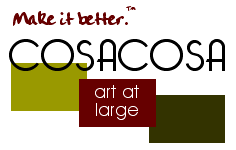



The arts are a powerful vehicle for communication, a way to express visions that are beyond the capacity of words and a medium for cultural enlightenment. One could go even further and argue that knowledge of the arts is an indispensable foundation for enlightened citizenship in our increasingly complicated world…
What may be less obvious is the role of art-making as a form of research. As in the sciences and other disciplines, those of us in the arts not only disseminate new methodologies and forms of knowledge, we help to create them. By definition, the process of creating a work of art — a painting, a dance, a musical composition, an architectural design, a theater piece or film — is from its inception a research project. Students are asked to formulate an original response to a unique field of inquiry and to “publish” their results not only in the form of research papers, but also through the mediums of performance and exhibition. In addition, the examples of outstanding arts practice available to students through our museums and performing-arts programs help to create a unique laboratory for the next generation of cultural innovators.
The arts are a medium of intellectual and ethical inquiry, a way of investigating the ever-changing world, of exploring the meaning of memory and tradition, and of charting the inner, subjective surfaces of human experience. Just as the medical sciences are devoted to extending and improving the quality of life, the arts help us to understand the essential reasons for that life, the deeper values, visions and commitments that sustain our will to survive. The study of the arts by its very nature challenges the boundary between theory and practice — between knowing about and knowing how.
One way to maximize the advantages of having strong arts programs within a research university is something that I call project-based education. It is an approach that takes as its starting point neither the established academic disciplines nor the various genres of art. Rather, one takes an aesthetic or intellectual problem, a question or conundrum, the exploration of which inevitably encourages us to traverse the frontiers that divide the disciplines and separate theoretical knowledge from creative practice. This is, after all, where the word university comes from — the notion of a holistic, aggregate universe of knowledge…
The true value of the arts and of art-making in the university context flows from the fact that our programs combine the traditional strengths of the academy, where students learn about the arts, and the conservatory, where students learn how to make art, to design, to choreograph, to compose. We agree with the pragmatic philosopher John Dewey that the division between theory and practice — or mind and body, if you will — has not had an entirely positive effect on our educational system or even our civilization. Although some persist in seeing the arts as an exalted but essentially impractical aspect of civilization — icing on the cake, as it were — I would argue that training in the arts can have the most pragmatic consequences.
The February 2004 issue of the Harvard Business Review featured a story titled “The M.F.A. is the New M.B.A.,” which reported on the increasing competitiveness in corporate hiring of M.F.A.s versus traditional business-school graduates. The author, Daniel Pinks, writes that “the demand for artistic aptitude is surging” in the business world: “Getting admitted to Harvard Business School is a cinch. At least that’s what several hundred people must have thought last year after they applied to the graduate program of the UCLA Department of Art — and didn’t get in. While Harvard’s M.B.A. program admitted about 10 percent of its applicants, UCLA’s fine-arts graduate [programs] admitted only 3 percent. Why? An arts degree is now perhaps the hottest credential in the world of business. Corporate recruiters have begun visiting the top arts grad schools … in search of talent.”
Students of the arts are challenged to find solutions, to take personal responsibility for their work and to bring the evanescent products of the creative imagination into the world with artistic discipline and technical mastery. The things we teach and the way we teach them — a synergy between the intense focus of the arts conservatory and the open intellectual horizons of the liberal-arts university — produce individuals who are good at seeing what’s around the bend and at seeking practical solutions to complex problems. Perhaps even more importantly, our young artists are able to view things that other people are inclined to take for granted as inherently questionable. That’s what artists do, after all; they pick up the box, shake it and rearrange the pieces. They are always asking “why that way?” An approach to the arts in higher education that links knowledge and practice, that concerns itself with the deep questions that run through and connect established bodies of knowledge, and that impels us to look at the world with new eyes, to listen with new ears and to question our own assumptions can have profound value both within and far beyond the boundaries of the university.
Christopher Waterman, Ph.D. is Professor of Culture and Performance and Dean of the UCLA School of the Arts and Architecture. His work as an anthropologist is focussed on the music, performing arts and cultures of sub-Saharan Africa and the Americas. This essay is an excerpt from an article of the same name, originally published in the fall 2004 issues of UCLA Magazine.